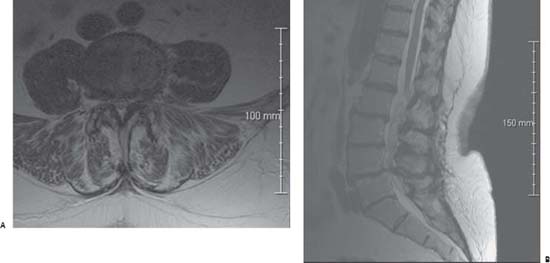Case 91 Cauda Equina Syndrome Cristian Gragnaniello and Remi Nader Fig. 91.1 (A) Axial T2- weighted magnetic resonance image (MRI) at the L5 pedicle level. (B) Sagittal T2-weighted MRI through the lumbar spine.

 Clinical Presentation
Clinical Presentation
 Questions
Questions
 Answers
Answers
91 Cauda Equina Syndrome
Case 91 Cauda Equina Syndrome Fig. 91.1 (A) Axial T2- weighted magnetic resonance image (MRI) at the L5 pedicle level. (B) Sagittal T2-weighted MRI through the lumbar spine.

 Clinical Presentation
Clinical Presentation
 Questions
Questions
 Answers
Answers
< div class='tao-gold-member'>
Only gold members can continue reading. Log In or Register to continue
Stay updated, free articles. Join our Telegram channel

Full access? Get Clinical Tree


